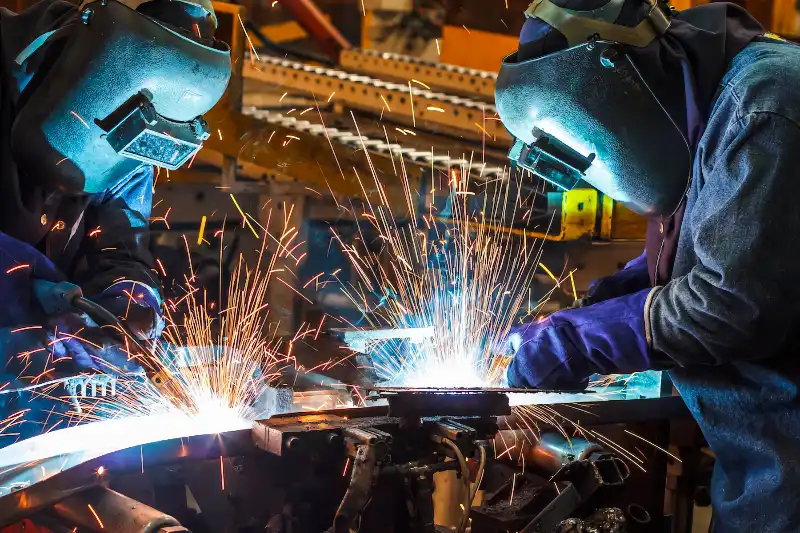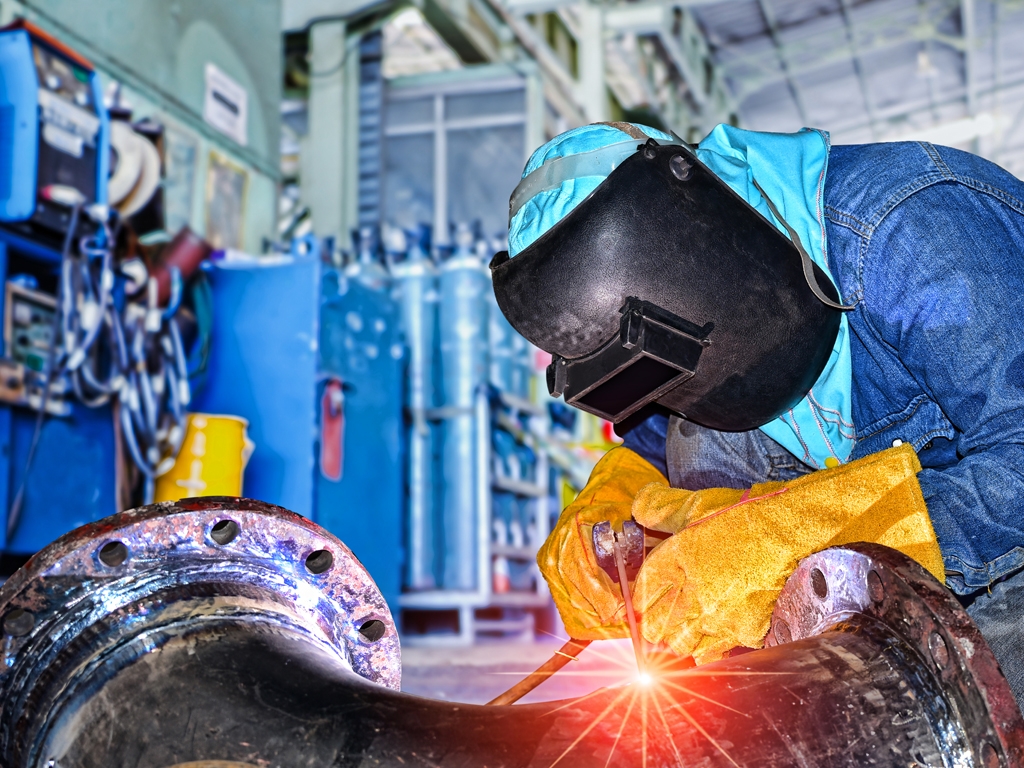Everything about Welding: Key Insights Into Techniques and Finest Practices for Success
Welding encompasses a variety of techniques, each matched for details materials and applications. Comprehending these techniques, such as GMAW, SMAW, and TIG, is essential for accomplishing ideal results. The ideal tools and safety and security practices can not be ignored. As preparation and fixing play important functions in the welding process, grasping these components can substantially enhance the top quality of the last item. What are the essential variables that guarantee a successful weld?
Recognizing Various Welding Techniques
Welding techniques include a selection of approaches, each suited to particular applications and products. Among the most common strategies are Gas Steel Arc Welding (GMAW), Secured Steel Arc Welding (SMAW), and Tungsten Inert Gas Welding (TIG) GMAW, likewise referred to as MIG welding, is preferred for its speed and flexibility, making it ideal for slim materials. SMAW, or stick welding, is favored for its simplicity and performance in outdoor environments, especially with thicker metals. TIG welding offers precision and control, making it ideal for intricate work and non-ferrous metals (Montana Mobile Welding and Repair Fabrication). Each strategy has its special advantages and factors to consider, permitting welders to select the finest technique based on the project's needs, material type, and preferred outcomes. Comprehending these techniques is important for successful welding
Crucial Welding Tools and Devices
While numerous welding methods need specific skills, the ideal equipment and tools are equally important for accomplishing quality results. Crucial welding equipment includes welding makers, which vary relying on the strategy-- such as MIG, TIG, or stick welding. Protective gear, including headgears, aprons, and gloves, assurances security and comfort during the process. In addition, components and clamps help secure materials in place, making certain precision in welds. Consumables like welding poles, cable, and shielding gas are additionally critical parts that affect the high quality of the weld. Tools such as mills and cutters promote surface area preparation and post-weld ending up, contributing to an expert outcome. Spending in premium tools ultimately enhances the performance and performance of welding projects.
Safety And Security Practices in Welding
Proper safety methods are vital in the welding market to protect workers from potential threats. Welders have to use appropriate personal protective equipment (PPE), including headgears with proper shading, handwear covers, and flame-resistant garments. Adequate ventilation is crucial to decrease direct exposure to dangerous fumes and gases created throughout the welding process. Furthermore, workers should be learnt the correct handling of welding tools to avoid crashes. Fire safety and security actions, such as keeping combustible materials away from the welding location and having fire extinguishers easily available, are needed. Normal inspections of tools and work spaces can aid identify potential threats prior to they result in accidents. By adhering to these safety practices, welders can create a much safer working environment and decrease dangers connected with their profession.
Readying Materials for Welding
Preparing products for welding is an important step that substantially affects the high quality and honesty of the end product (Montana Mobile Welding and Repair Belgrade Fabrication). Appropriate prep work involves cleansing the surfaces to eliminate pollutants such as rust, oil, and dirt, which can endanger the weld. Strategies such as grinding, fining sand, or using solvents are frequently utilized to attain a clean surface area. Furthermore, ensuring that the products mesh comfortably is necessary; gaps can bring about weak welds. It's also crucial to think about the positioning and positioning of the elements, as this will certainly affect the simplicity of welding and the final result. Ultimately, choosing the ideal filler product and making certain compatibility with the base steels is necessary for attaining solid, durable welds
Tips for Getting High-Quality Welds
Attaining high-quality welds requires interest to detail and adherence to best methods throughout the welding process. Proper joint prep work is vital, guaranteeing surfaces are clean and totally free from impurities. Choosing the suitable filler product and welding method based upon the base metals is important for ideal bonding. Maintaining regular traveling rate and angle while welding can protect against flaws and advertise uniformity. Additionally, controlling warm input is necessary; excessive warm can result in bending and compromised joints. Consistently inspecting the welds during the procedure enables prompt modifications if needed. Ultimately, utilizing suitable post-weld treatments, such as cleansing and stress relief, can boost the longevity and honesty of the weld, ultimately making sure an effective end result.
Repairing Common Welding Issues
Welding typically offers difficulties that can impact the quality and honesty of the final item. Typical problems such as porosity, inconsistent weld grains, and getting too hot can emerge, each calling for certain repairing strategies. Recognizing these issues is crucial for welders to enhance their abilities and attain ideal results.
Porosity Problems Explained
Porosity can usually be forgotten, it remains an home important issue in welding that can jeopardize the integrity of an ended up item. Porosity refers to the presence of little gas pockets within the weld grain, which can lead and damage the joint to premature failure. This issue usually develops from impurities, wetness, or inappropriate securing gas coverage throughout the welding procedure. To mitigate porosity, welders should confirm that the base products are clean and dry, utilize proper shielding gases, and preserve consistent welding specifications. Regularly examining the devices and setting can additionally help determine prospective issues before they materialize in the weld. Attending to porosity properly is crucial for achieving solid, long lasting welds that satisfy quality standards.

Irregular Weld Beans
Inconsistent weld grains can significantly impact the quality and strength of an ended up product. Different factors contribute to this problem, including improper traveling rate, inaccurate amperage setups, and irregular electrode angles. When the welder moves also swiftly, a bead might appear narrow and do not have infiltration, while moving also slowly can trigger excessive buildup. Additionally, making use of the wrong amperage can lead to either damaging or extreme spatter, both of which compromise weld stability. The welder's technique, such as inconsistent lantern motion, can also bring about unequal bead look. To mitigate this contact form these problems, welders should focus on maintaining constant, controlled movements and making certain proper tools settings to accomplish uniformity in their welds. Uniformity is essential to achieving reputable and strong welds.
Overheating and Warping Issues
Excessive heat throughout the welding process can result in significant getting too hot and buckling issues, impacting the structural integrity of the workpiece. These issues typically manifest as distortion, which can compromise positioning and fit-up, making additional assembly testing. Variables adding to overheating consist of the selection of welding criteria, such as voltage and take a trip speed, as well as the kind of material being bonded. To mitigate these concerns, welders need to maintain consistent traveling speed and proper warmth input while their website keeping track of the workpiece temperature level. Furthermore, pre-heating or post-weld warmth treatment can help relieve anxieties triggered by fast cooling - Montana Mobile Welding and Repair Fabrication. Regular assessment and adherence to ideal techniques are vital in avoiding overheating and ensuring the longevity and dependability of welded structures
Regularly Asked Inquiries
What Are the Career Opportunities in the Welding Sector?
The welding sector offers varied job chances, consisting of settings as welders, designers, instructors, and inspectors. Experts can function in production, construction, aerospace, and auto fields, gaining from strong need and competitive salaries in different roles.
How Can I Boost My Welding Rate Without Sacrificing Quality?
To boost welding rate without compromising quality, one should exercise effective techniques, maintain tools, maximize setups, and improve hand-eye coordination. Regular training and looking for comments can likewise greatly add to attaining faster, top quality welds.
What Accreditations Are Readily Available for Welders?
Numerous certifications exist for welders, including those from the American Welding Culture (AWS), the National Facility for Construction Education And Learning and Study (NCCER), and numerous industry-specific organizations. These credentials boost employability and demonstrate ability efficiency.
Just How Does Welding Impact the Properties of Metals?
Welding influences the residential or commercial properties of metals by changing their microstructure, which can cause adjustments in solidity, toughness, and ductility. Warmth input and air conditioning rates during the procedure substantially impact these product qualities.
Can I Bonded Dissimilar Metals With Each Other?
